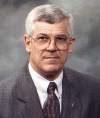Editorial Comment
Greens had say in energy plan after all. Ever since President Bush proposed his energy plan, news coverage of his energy task force has suggested that the White House left environmentalists and consumers out of the planning. This seems to have been exacerbated by the Enron scandal. Yet The Washington Times says most print and broadcast accounts ignored or buried the fact that administration officials actually contacted environmental groups for input, but were rebuffed. Evidence that these groups were included was detailed in both an Energy Department letter and an e-mail comprising documents released by the agency. Instead of interpreting these documents to show inclusion of all views, the media used them to embellish their standard portrayal of a deceitful Bush administration preoccupied with big oil, big business and influence peddling. For example, a lead Washington Post story reporting on the document’s release screamed "Consumer Groups Left Out, Data Show." The Post went on to say that a first review of the 11,000 pages of documents bolsters the contention of Democratic lawmakers and environmental groups that the Bush administration relied almost exclusively on the advice of executives from utilities and producers of oil, gas, coal and nuclear energy. But citing "new information," The Washington Post later softened those initial claims, acknowledging that the energy task force "belatedly consulted environmentalists," but "sought input only after protests." The New York Times followed a similar path, burying significant information in the final paragraphs of its story. "(Energy Department spokeswoman Judith) Schroeder said that other Energy Department officials met five environmental and consumer groups – the American Council for an Energy Efficient Economy, the Sierra Club, Environmental Defense, Resources for the Future and the American Wind Energy Association. And she said five other groups did not respond to a request for comments, including the World Wildlife Fund and Greenpeace." White House Spokesman Ari Fleischer had the best analysis of the situation. "News flash," Mr. Fleischer said, "it’s no surprise to anybody that the Secretary of Energy meets with energy-related groups." Lost and found. The Arizona Republic says that former Interior Secretary and Arizona Gov. Bruce Babbitt was reported missing back in March when he failed to return from a hike in the Hell’s Canyon Wilderness. Many in this industry may think it unfortunate that he was found 40 minutes later. Babbitt was reported missing around 5:20 p.m. after walking ahead of a hiking party. After being left behind, his friends expected to find him back at the car, but when they did not find him there, they immediately called authorities. However, before the sheriff’s department could begin a full-fledged search, Babbitt came strolling back to the car area, unharmed and unscathed. Hooting up the wrong tree. Faulty data on spotted owl habitat was knowingly used by U.S. Forest Service officials to block logging in a California forest, according to court documents obtained by The Washington Times and described in a recent article. In fact, a previously undisclosed ruling by a Federal Claims Court judge said the Forest Service did not have a "rational basis" for halting a timber sale to a lumber company. The revelation of what the timber company’s lawyer called "junk science" follows several other questionable actions taken by federal officials in the name of protecting endangered species. For example, The Washington Times says false samples were submitted into a national lynx survey and faulty information was used to cut off water to farmers and to establish habitat for endangered fish species. In the owl fiasco, two Forest Service scientists used aerial and satellite photographs to identify old-growth trees to conclude that logging in only 5% of the proposed sale area would affect the owls’ habitat. However, the scientists did not verify their findings with a ground inspection, and two subsequent reviews of the findings by a private contractor and the government said the analysis was unreliable. But the timber sales were canceled anyway. An ecologist was asked during trial if she believed her assessment was valid. According to the paper’s documents, she responded, "I believe that I attempted to conduct a valid accuracy assessment, but my understanding since . . . is it probably wasn’t an appropriate method to use." And another government witness and expert on spotted owls said he "came away with the strong impression that it was . . . a suitable nesting habitat." Incredibly, he also said, as he drove through the forest, "I had the feeling I was never outside a stone’s throw of suitable foraging habitat. I was that convinced that there’s a pair of owls in there that has not, at this point, been detected." (Wow! That’s scientific.) Other suspicious actions taken by federal officials in the name of protecting endangered species included:
Hot stuff. The Associated Press reported that two concourses at the New Orleans international airport were evacuated earlier this year because of a suspicious package found in a men’s restroom. Some 1,000 travelers were moved to other concourses and sent through security checks a second time. The package was found about 4:30 p.m., and the concourses were reopened about five hours later. Officials said the box was suspicious because it was wrapped with newspaper clippings showing long lines of passengers at the airport. Bomb-sniffing dogs "smelled something they were trained to smell," said the sheriff of Jefferson Parish, without elaborating. The bomb squad found containers of gumbo in the box. The package’s owner had not been determined. But we suspect he left hungry.
|
- Prices and governmental policies combine to stymie Canadian upstream growth (February 2024)
- U.S. producing gas wells increase despite low prices (February 2024)
- U.S. drilling: More of the same expected (February 2024)
- U.S. oil and natural gas production hits record highs (February 2024)
- U.S. upstream muddles along, with an eye toward 2024 (September 2023)
- Canada's upstream soldiers on despite governmental interference (September 2023)



